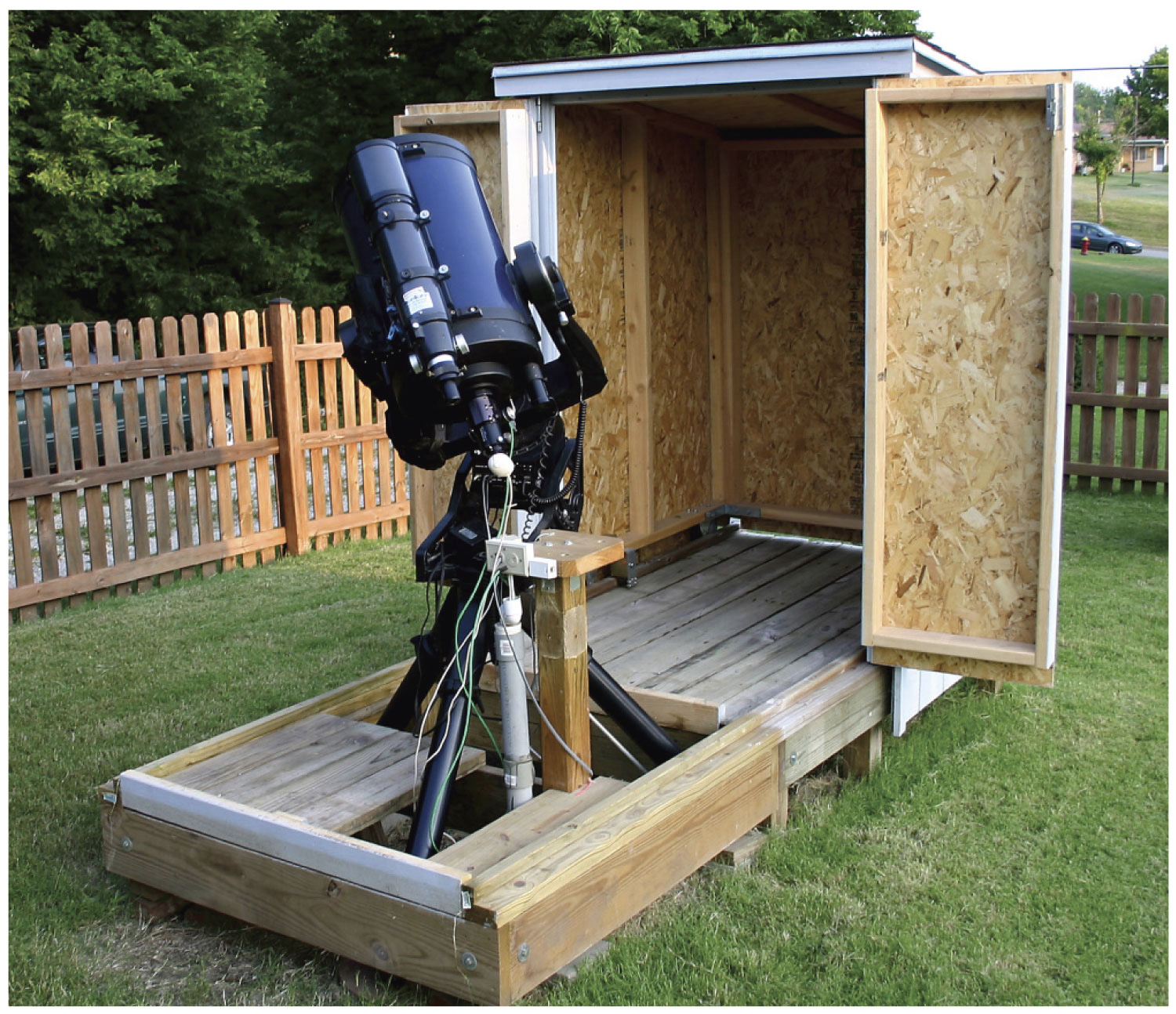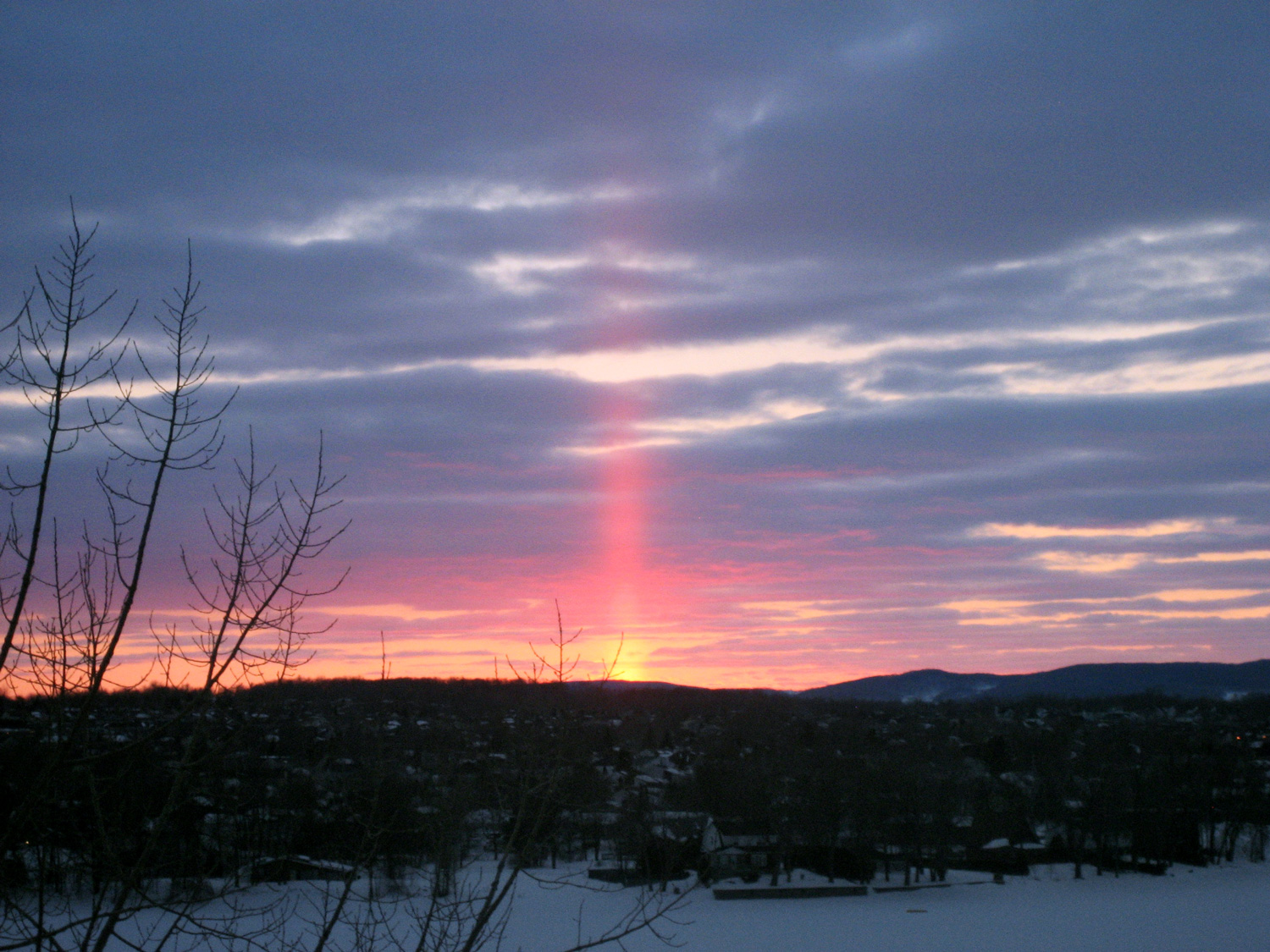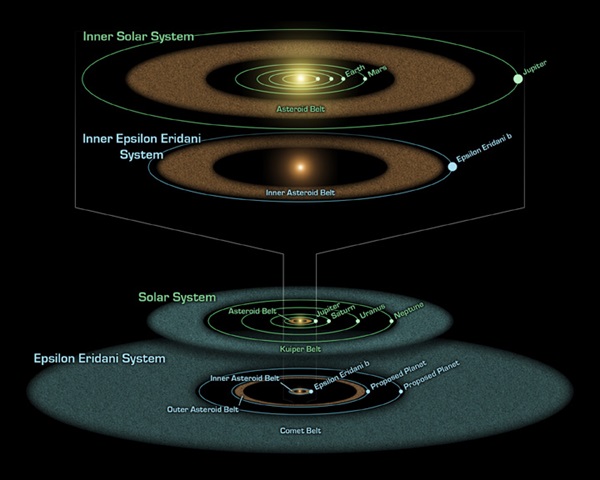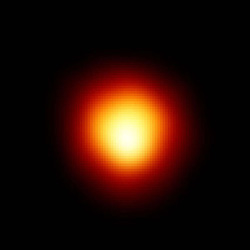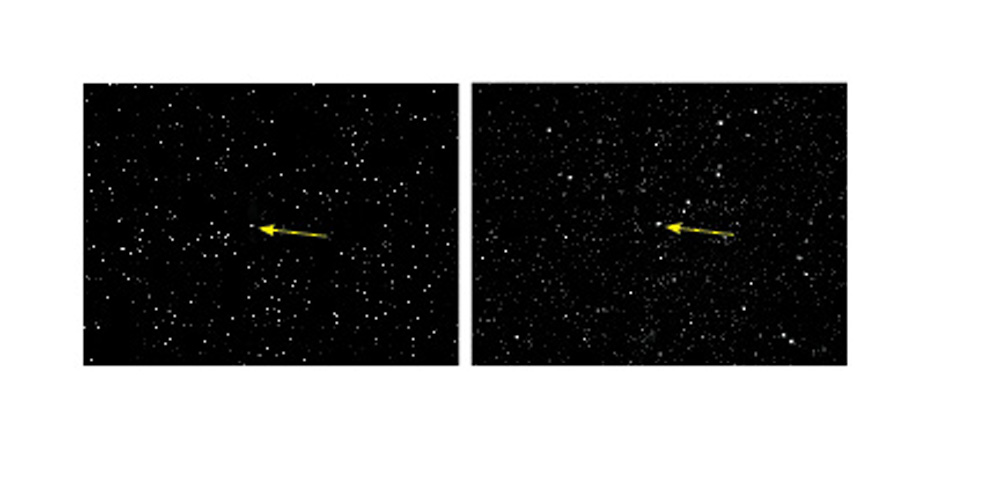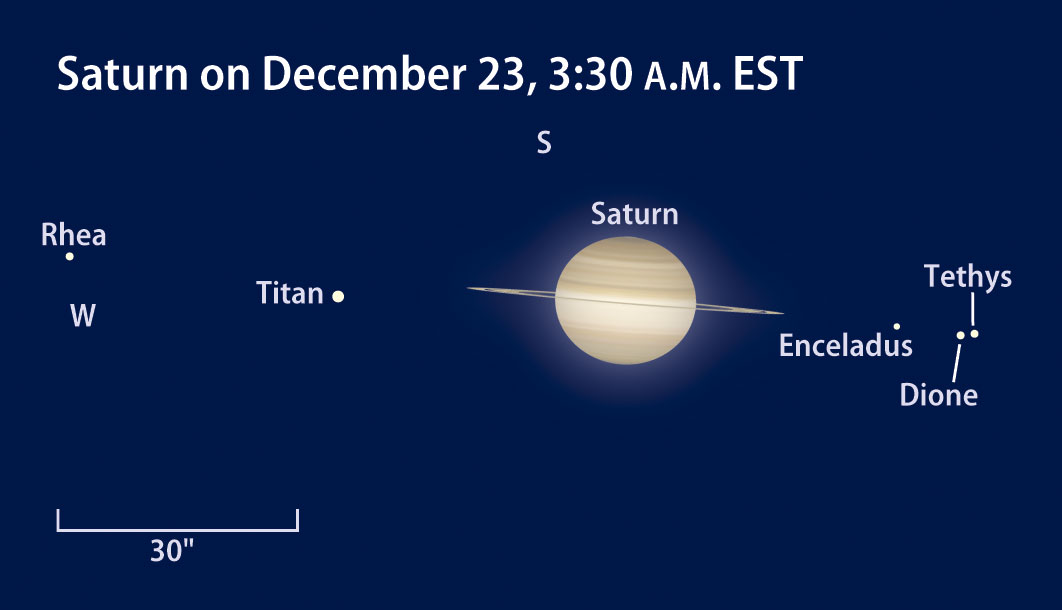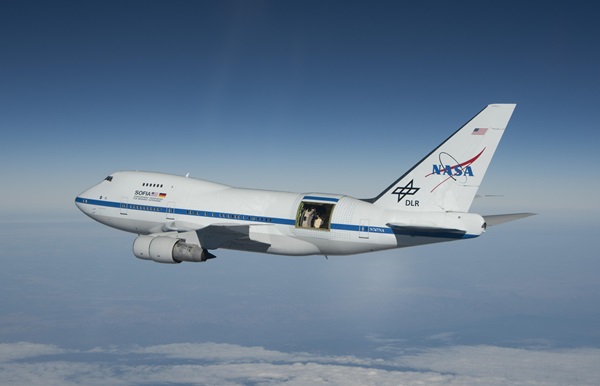As the Sun set one evening, I observed a sword-like column of light pointing straight up from the horizon. What was it?
Solar system’s young twin has two asteroid belts
Astronomers discovered the nearby star Epsilon Eridani has two rocky asteroid belts and an outer icy ring, making it a triple-ring system. The inner asteroid belt is a virtual twin of the asteroid belt in our solar system, while the outer asteroid belt holds 20 times more material. Moreover, the presence of these three rings of material implies that unseen planets confine and shape them.
The star Epsilon Eridani is slightly smaller and cooler than the Sun. It is located about 10.5 light-years from Earth in the constellation Eridanus. Epsilon Eridani is the ninth closest star to the Sun and is visible to the unaided eye. It is also younger than the Sun, with an approximate age of 850 million years.
Epsilon Eridani and its planetary system show remarkable similarities to our solar system at a comparable age.
“Studying Epsilon Eridani is like having a time machine to look at our solar system when it was young,” said Smithsonian astronomer Massimo Marengo. Marengo is a co-author of the discovery paper, which will appear in the January 10 issue of The Astrophysical Journal.
Lead author Dana Backman (Search for Extraterrestrial Intelligence Institute) said, “This system probably looks a lot like ours did when life first took root on Earth.”
Our solar system has a rocky asteroid belt between Mars and Jupiter. In total, it contains about 1/20 the mass of Earth’s Moon. Using NASA’s Spitzer Space Telescope, the team of astronomers found an identical asteroid belt orbiting Epsilon Eridani.
A third, icy ring of material seen previously extends about 35 to 100 astronomical units from Epsilon Eridani. A similar icy reservoir in our solar system is called the Kuiper Belt. However, Epsilon Eridani’s outer ring holds about 100 times more material than ours.
When the Sun was 850 million years old, theorists calculate that our Kuiper Belt looked about the same as that of Epsilon Eridani. Since then, much of the Kuiper Belt material was swept away, some hurled out of the solar system and some was sent plunging into the inner planets in an event called the Late Heavy Bombardment. The Moon shows evidence of the Late Heavy Bombardment — giant craters that formed the lunar seas of lava called mare. It is possible that Epsilon Eridani will undergo a similar dramatic clearing in the future.
“Epsilon Eridani looks a lot like the young solar system, so it’s conceivable that it will evolve similarly,” said Marengo.
The Spitzer data show gaps between each of the three rings surrounding Epsilon Eridani. Such gaps are best explained by the presence of planets that gravitationally mold the rings, just as the moons of Saturn constrain its rings.
“Planets are the easiest way to explain what we’re seeing,” stated Marengo.
Specifically, three planets with masses between those of Neptune and Jupiter would fit the observations nicely. Radial velocity studies have detected a candidate planet near the innermost ring already. Those studies suggested that it orbited Epsilon Eridani on a highly elliptical path, characterized by an eccentricity of 0.7. The new finding rules out such an orbit, because the planet would have cleared out the inner asteroid belt long ago through gravitational disruption.
A second planet must lurk near the second asteroid belt, and a third at about 35 astronomical units near the inner edge of Epsilon Eridani’s Kuiper Belt. Future studies may detect these currently unseen worlds, as well as any terrestrial planets that may orbit inside the innermost asteroid belt.
Astronomers have estimated star diameters from their colors and brightnesses, but modern interferometers can measure them directly. How do the two methods compare?
Phil Harrington’s binocular universe: It’s a Wonderful Star
We might use a slight variation on that title to highlight a celestial event occurring this month, as well: It’s a Wonderful Star.
See extremophiles on Earth
A grand conjunction
Scientists selected for new eye on the universe
On behalf of NASA, the Universities Space Research Association, Columbia, Maryland, selected three astronomers to participate the Stratospheric Observatory For Infrared Astronomy (SOFIA). SOFIA is a highly modified Boeing 747SP aircraft that carries a 98-inch (2.5-meter) diameter airborne infrared telescope.
Naming researchers from the astronomy community is a milestone on SOFIA’s journey to become the most versatile airborne telescope in the world. The flying observatory will begin its short science, or “first light” observations, in early summer 2009, and will continue its program of celestial observations for the next 20 years.
“We are extremely pleased at the level of enthusiasm and the number and scope of the applications we received for the SOFIA short science program,” said Eric Becklin, SOFIA chief scientific advisor. “The proposals we received set a high standard for future observation projects onboard SOFIA.”
David Neufeld of Johns Hopkins University, Baltimore, will study the chemistry of warm interstellar gas using data the German Receiver for Astronomy at Terahertz Frequencies (GREAT) obtains. This instrument is a spectrometer developed specifically for the SOFIA program by a consortium of German research institutes, led by Rolf Guesten at the Max Planck Institute for Radioastronomy in Bonn, Germany. Neufeld will use data from GREAT to probe the chemistry of the warm gas by observing emissions from molecules, such as carbon monoxide (CO). The study will help researchers understand the nature of chemical reactions taking place in the warm gas that is found around forming stars as well as other regions in the interstellar medium.
The other two researchers selected to participate in the “first light” flights, Mark Morris of the University of California at Los Angeles, and Paul Harvey of the University of Colorado, Boulder, will join the team using the Faint Object InfraRed Camera for the SOFIA Telescope (FORCAST), a mid-spectrum infrared camera developed by Terry Herter of Cornell University, Ithaca, New York.
Morris will collaborate with the FORCAST team to study the Milky Way’s center, a dynamic region of extreme gas densities and high-energy content. In the central region, which spans a distance of 1,000 light-years, the high concentration of molecular gas results in a high rate of massive star formation. Scientists will use the FORCAST instrument to develop the clearest view of the hot dust in the region. Harvey will work with the FORCAST team to interpret observations of bright star-forming regions to determine SOFIA’s current and future imaging capabilities.
SOFIA observes radiation generated by cosmic objects across the widest wavelength range of any observatory, from 0.3 microns to 1.0 millimeters, spanning the visible, infrared, and sub-millimeter portions of the electromagnetic spectrum. Missions typically will last between 10 and 12 hours, and the aircraft flies from 7.5 to 8.5 miles (12 to 14 km) above Earth. Flying at these altitudes puts SOFIA’s infrared telescope above 99.8 percent of the water vapor in Earth’s atmosphere. This enables a greater range of observations in the infrared spectrum.
Following the first light observations, SOFIA will begin its “basic science” program in late 2009 with approximately 15 flights. Proposals for the basic science flights will be solicited in December 2008.
Could a dwarf galaxy merging with the Milky Way have triggered the solar system’s formation?
Binocular universe web extra: Estimating Mira’s magnitude
Looking at this chart, notice how many of the stars surrounding Mira have numbers next to them. Each represents that star’s apparent magnitude rounded to the nearest tenth and then multiplied by 10 to avoid a period being misinterpreted as a star. For example, the star marked “55” is magnitude 5.5, and so on. Those stars do not vary in brightness, so they may be used as comparison stars when judging the brightness of Mira and Vesta, which do vary. The magnitudes shown are based on values from the American Association of Variable Star Observers www.aavso.org.
The unusual galaxy M77 is also shown on the chart. M77 is the brightest of several galaxies found near Delta (δ) Ceti, although none of the others will be seen through binoculars. Even M77 needs 70-mm or larger binoculars to be visible. Look for its small, faint disk about halfway between Delta and an isosceles triangle of 8th-magnitude stars 1.5° to the southeast.
Satellite directly sees ‘Sun-quakes’
Listening to the Sun through a technique similar to seismology opened a new era for understanding the Sun’s interior. The French Space Agency’s (CNES) and the European Space Agency’s (ESA) COnvection ROtation and planetary Transits (COROT) satellite applied this technique to three stars, directly probing the interiors of stars other than the Sun for the first time.
When scientists discovers the Sun’s global oscillations, they opened a window to the Sun’s interior. Just as the propagation of seismic waves on Earth provides information about our planet’s interior, sound waves travel throughout the Sun carrying information about what is happening below the surface.
These oscillations also can be observed on other stars. They can be detected through the variation in the light emitted by the star as the surface wobbles — COROT’s technique. This method reveals the star’s internal structure, and how energy moves from the core to the surface.
“Other techniques to estimate stellar oscillations have been used from the ground, but they are limited in what they can do,” said Malcolm Fridlund, Project Scientist for COROT at ESA’s European Space Research and Technology Centre (ESTEC), in the Netherlands, and co-author of the results.
“Adverse weather conditions, plus the fact that you cannot observe stars during daytime, oblige ground astronomers to interrupt their observations,” he said. “Now, the key to detecting such small stellar oscillations from big distances is not only the sensitivity of an instrument, but also the opportunity of observing the star without interruption: any interruption produces noise in the data that can cover a signal completely. Therefore, to be certain, we must approach the question with the right instruments and from space.”
The three stars COROT probed — known as HD499933, HD181420, and HD181906 — are similar to the Sun. They are outside stellar neighborhood, so their brightness doesn’t blind COROT’s instruments.
“The fact that COROT succeeded in probing the interior of Sun-like stars with direct measurements for the first time is a huge leap in understanding stars in general,” said Fridlund. “In addition, this will help us to understand, by comparison, our own Sun even better.”
Cosmic lens reveals distant galactic violence
By cleverly unraveling the workings of a natural cosmic lens, astronomers have gained a rare glimpse of the violent assembly of a young galaxy in the early universe. Their new picture suggests that the galaxy has collided with another, feeding a super-massive black hole and triggering a tremendous burst of star formation.
The astronomers used the National Science Foundation’s Very Large Array (VLA) radio telescope in Socorro, New Mexico, to look at a galaxy more than 12 billion light-years from Earth, seen as it was when the universe was only about 15 percent of its current age. Between this galaxy and Earth, lies another distant galaxy so perfectly aligned along the line of sight that its gravity bends the light and radio waves from the farther object into a circle, or “Einstein Ring.”
This gravitational lens made it possible for the scientists to learn details of the young, distant galaxy that would have been unobtainable otherwise.
“Nature provided us with a magnifying glass to peer into the workings of a nascent galaxy, providing an exciting look at the violent, messy process of building galaxies in the early history of the universe,” said Dominik Riechers, who led this project at the Max Planck Institute for Astronomy in Germany and now is a Hubble Fellow at the California Institute of Technology (Caltech) in Pasadena.
The new picture of the distant galaxy, dubbed PSS J2322+1944, shows a massive reservoir of gas, 16,000 light-years in diameter, that contains the raw material for building new stars. A super-massive black hole is voraciously eating material, and new stars are being born at the rate of nearly 700 suns per year. By comparison, our Milky Way Galaxy produces the equivalent of about three to four suns per year.
The black hole appears to be near the edge, rather than at the center, of the giant gas reservoir. Astronomers say this location indicates the galaxy has merged with another.
“This whole picture of massive galaxies and super-massive black holes assembling themselves through major galaxy mergers so early in the universe is a new paradigm in galaxy formation. This gravitationally lensed system allows us to see this process in unprecedented detail,” Chris Carilli of the National Radio Astronomy Observatory in Charlottesville, Virginia, said.
In 2003, astronomers studied PSS J2322+1944 and found the Einstein Ring by observing carbon monoxide (CO) molecules emit radio waves. When astronomers see large amounts of CO in a galaxy, they conclude that there also is a large amount of molecular hydrogen present, and thus a large reservoir of fuel for star formation.
In the latest study, scientists painstakingly produced a physical model of the lensing intermediate galaxy. By knowing the galaxy’s mass, structure, and orientation, they deduced the details of how it bends light and radio waves from the more-distant galaxy. Then they reconstructed a picture of the distant object. By doing multiple VLA images made at different radio frequencies helped the team measure the motions of the gas in the distant galaxy.
“The lensing galaxy was, in effect, part of our telescope. By projecting backward through the lens, we determined the structure and dynamics of the galaxy behind it,” Fabian Walter said of the Max-Planck Institute for Astronomy in Germany.
George Djorgovski of Caltech used the digitized Palomar Observatory Sky Survey to discover PSS J2322+1944. Later radio and optical studies showed it had a huge reservoir of dust and molecular gas and indicated gravitational lensing.
Albert Einstein’s General Theory of Relativity predicted gravitational lenses in 1919. In 1936, Einstein showed that a perfectly aligned gravitational lens would produce a circular image, but he felt the chances of actually observing such an object were nearly zero. The first gravitational lens was discovered in 1979, and researchers using the VLA in 1987 discovered the first Einstein Ring.

